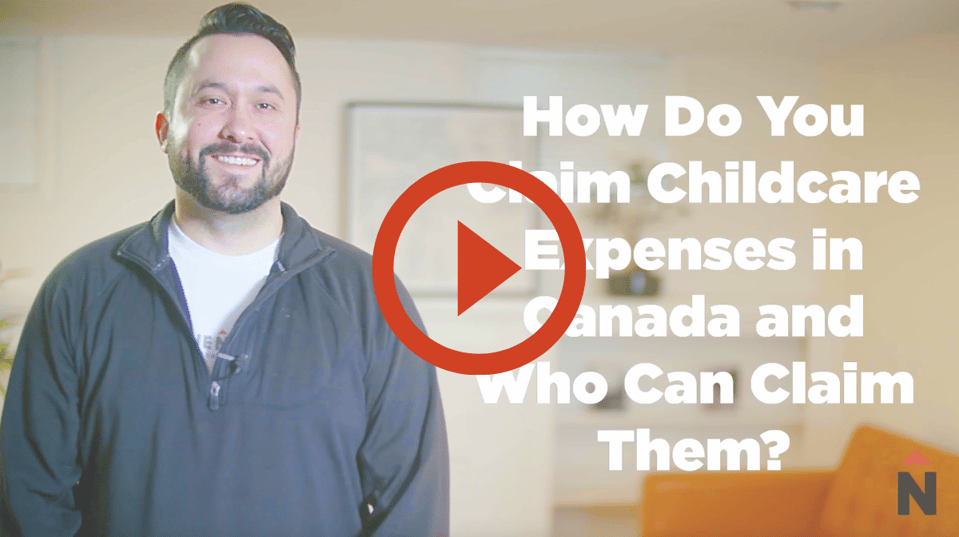Working parents juggle a lot. Finding the best child care for your kids means you can rest easy while you focus on building your business. Many families choose to hire a nanny for one-on-one care or for convenience. And once you’ve found someone you trust, you shouldn’t need to worry about the financial implications.
We're here to show you how to hire a nanny legitimately while also getting the best bang for your buck by claiming your nanny expenses with the CRA.
Our CPAs can help you with the process, which includes getting a business number, setting up a payroll account, running payroll remittances and filing the T4 slip at the end of the year.
VIDEO: Curtis at True North Accounting explains when you can claim child care expenses and who can claim them.
Hiring a nanny
Get recommendations from people you trust, including friends, family and coworkers. You can also consult trusted sites like Care.com or CanadianNanny.ca. Once you have chosen the right person, here are the steps to hiring a nanny.
- Make sure you’re eligible for the tax benefit in the first place. There are many rules here, so feel free to talk to us about which ones apply to you.
- Collect the nanny’s information: their contact information (email and phone number) and social insurance number, and let them know how you will be paying them.
- Ensure both parties understand the rules and costs associated with this decision. An employment contract with your nanny is advised.
- Get a business number and open a payroll account with the CRA. This can be done online, but it’s best to do this with your accountant.
- Decide how you will do the payroll remittance calculation and payment. You can do this on your own with a payroll program or hire a bookkeeper or accountant to help.
Tip: The CRA offers an online payroll calculator with instructions, but we can help as well. - At the end of the year, you’ll need to file a T4 slip showing the total amount paid to the nanny and remitted.
Can you claim nanny expenses on your taxes?
Yes! You can hire a nanny and deduct the cost from your taxable income. The nanny will become your employee, and you must pay them like an official employee by making payroll remittances each month. If your nanny lives with you, you can also deduct room and board.
However, any amounts that are reimbursed by an employer do not qualify.
What if the nanny wants to be paid under the table?
A nanny may ask to be paid cash under the table to avoid reporting their income, or you may consider this to avoid payroll costs. Think carefully before going this route — if the CRA audits you, it could become a costly workaround that isn’t worth the risk.
Under employment law, nannies are entitled to EI, CPP, vacation pay, overtime, sick leave and other benefits. Depending on the circumstances, you could be on the hook for CPP, EI and withheld income taxes for the entire period of employment, with penalties and interest on top.
Child care expenses explained
If you are a parent and are running a business, or going to school or work, then you are eligible to claim child care expenses for all children under the age of 16. Daycare, summer camp, nurseries and nanny services are all deductible expenses for parents.
If you’re using a nanny or child care service, you’ll need a receipt from the care provider outlining what you paid for services. And if you received child care services from an individual, like a close friend or a family member, you will need to confirm that they are reporting the income so you can claim the eligible child care expense.
Note: If you have a nanny, they cannot be a relative who is under the age of 18 to be eligible for child care expenses.
Who can claim child care expenses?
The tax deduction must be claimed by the parent in the lower tax bracket, and it can only be applied against earned income. This can cause a problem if the lower-income spouse doesn’t have employment income. The tax benefit is the largest when both parents work and are in relatively high tax brackets.
See also our tax tips for separated parents.
Wondering if grandparents can also claim child care expenses in Alberta? See our blog!
What is the child care deduction limit?
If the child lives with you and is under 16, the tax deduction limit is:
- $8,000 for each child under the age of 7
- $5,000 for each child between the ages of 7 and 16
- $11,000 for disabled, dependent children of any age who qualify for the disability tax credit
- $5,000 for disabled, dependent children over the age of 16 who do not qualify for the disability tax credit
Learn more about claiming child care expenses in Canada in our blog.
If you have more questions about your child care or nanny situation, we’re happy to help. Our Chartered Professional Accountants (CPAs) have extensive knowledge of the changing tax laws — including ones related to self-employed professionals like yourself. We provide bookkeeping and tax services to small business owners in Okotoks and Calgary, as well as payroll support, deductions, write-offs, expenses, tax returns, GST filing and more.
Read more about Personal Tax topics that may be helpful to you and your small business.

.png)






